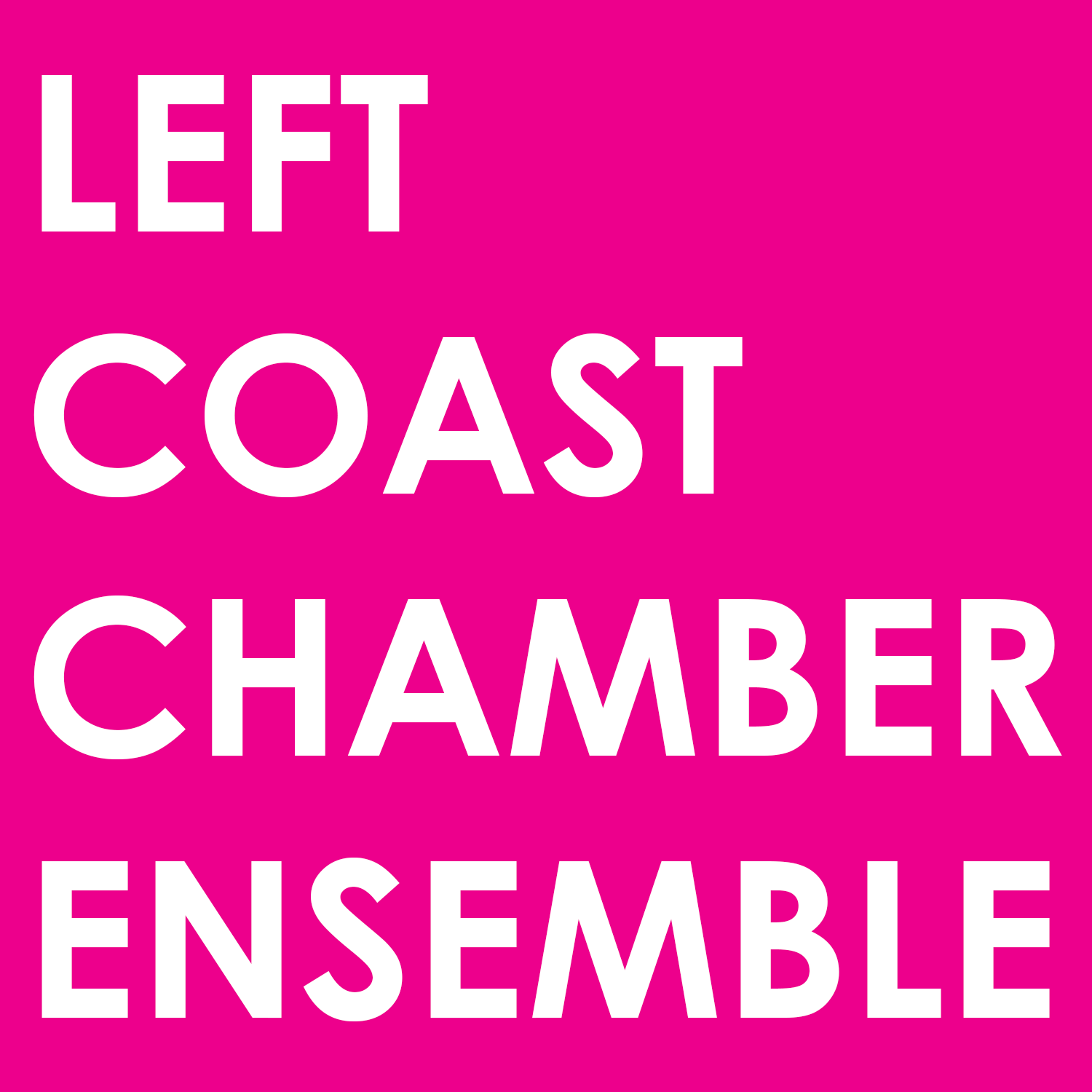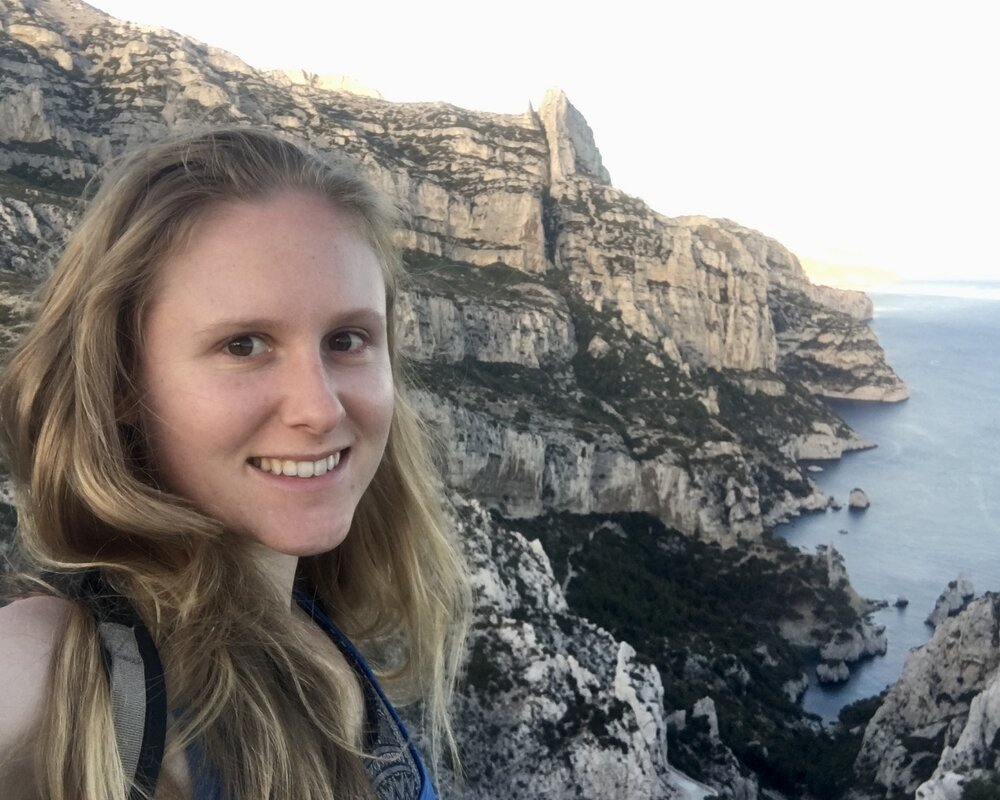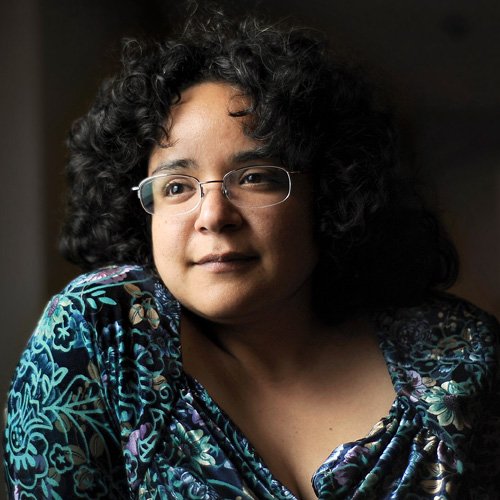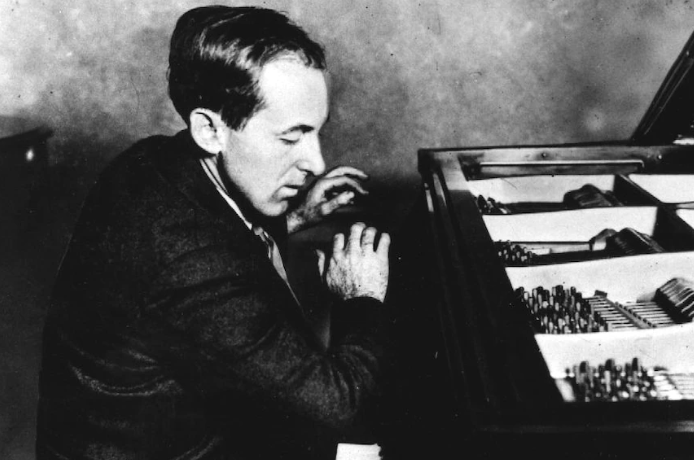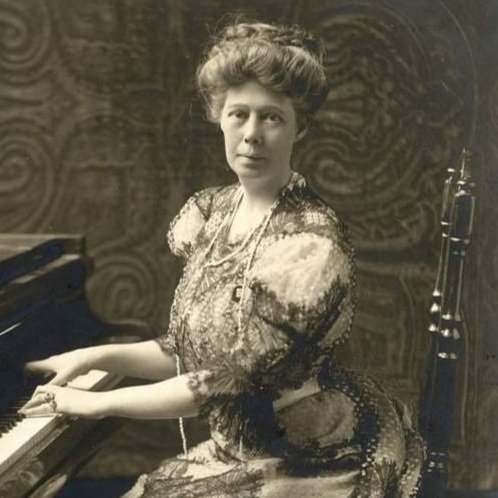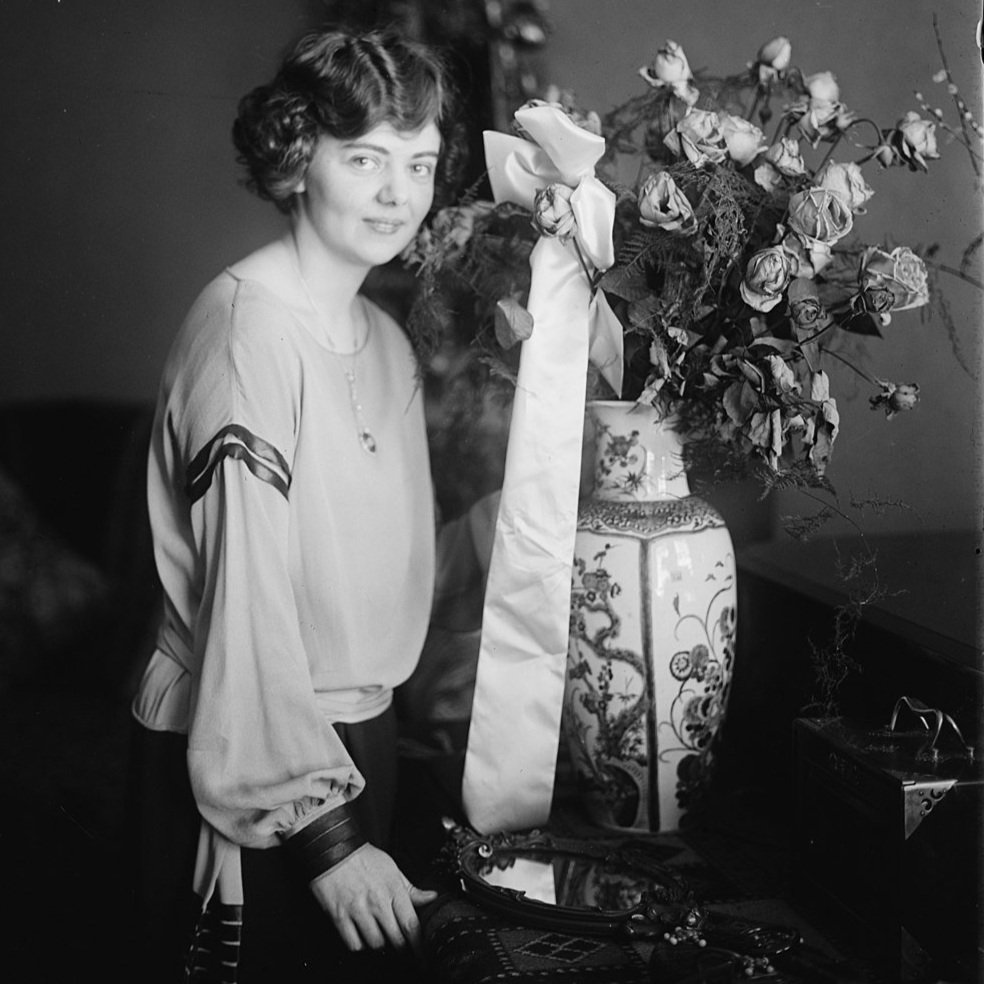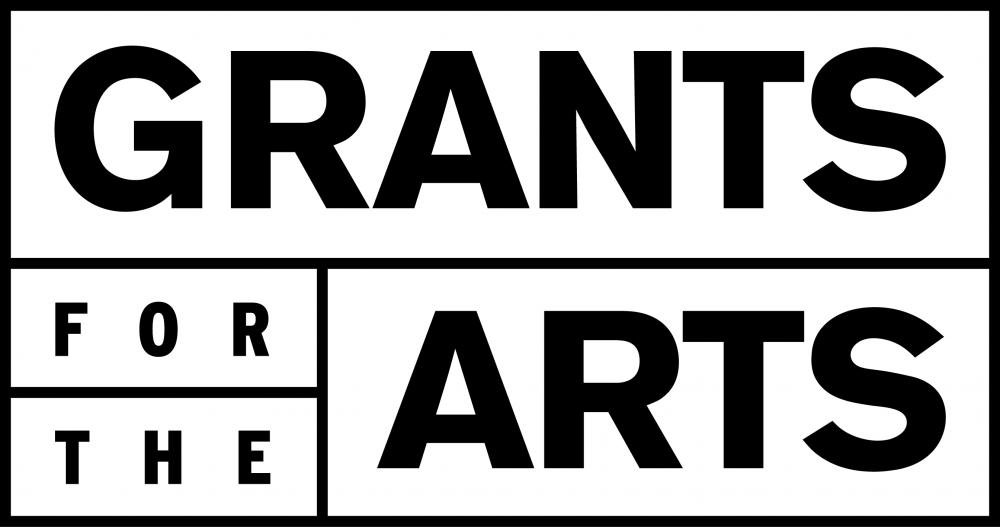Left Coast at the California Festival: California voices
Art Song and Keyboard Music of California
Left Coast explores the voices of women composers of California in song, both historical and contemporary, ranging from Elinor Remick Warren and Carrie Jacobs-Bond to Vivian Fung, Addie Camsuzou and Gabriela Lena Frank. Works for piano by Gabriella Smith and Henry Cowell complement the program which spans more than a century of Californian music.
Program includes:
Gabriella Smith - Imaginary Pancake
Henry Cowell - Three Irish Legends
Vivian Fung - Pot Roast à la RBG
Carrie Jacobs-Bond - Half-Minute Songs
Elinor Remick Warren - Heather
- Lonely Roads
- If you have Forgotten
Addie Camsuzou - I’m not Here WORLD PREMIERE
Gabriela Lena Frank - Cuatro Canciones Andinas
Mary Carr Moore - My Dream
Frieda Peycke - If only we could
- Just keep on keepin’on
Artists
Nikki Einfeld - Soprano
Allegra Chapman - Piano
Join us early on November 19th for a pre-concert talk! Distinguished Professor of Music, Professor Christopher A. Reynolds is the author of Motives for Allusion: Context and Content in Nineteenth-Century Music on how composers in the nineteenth century influenced each other, and he received the 2014 Richard S. Hill Award from the Music Library Association for his article on women song composers.
Pre-concert talks begins at 6:45pm on Sunday, November 19th.
This concert is generously supported in part by the American Music Project
Left Coast presents two programs as part of the inaugural California Festival: A Celebration of New Music, which is happening throughout the state from November 3-19th: “This Is What It Means” and “Art Song and Keyboard Music of California”. We present more than twelve different Californian composers and span more than a century of music. How we listen to nature in a changing world is a current which runs through these concerts.
Meet the composers
-
Carrie Jacobs-Bond & Frieda Peycke
by Beth LevyFrequently described as America’s most famous “woman composer,” Carrie Jacobs-Bond was easily her generation’s most famous songwriter of any gender, with hit titles to her credit including “A Perfect Day,” “I Love You Truly,” and many more. In the words of network radio star Edwin C. Hill, who narrated a laudatory documentary film devoted to Jacobs-Bond in 1933, these are poignant songs “timed to the beat of the human heart.” There is another side to Jacobs-Bond’s story, however, and this is revealed by her steely entrepreneurship and the sense of humor broadly on display in her popular Half Minute Songs. Married and widowed early, she published her first song in 1894, the year of her second husband’s death, and she soon became the first American woman to found her own publishing company, “Carrie Jacobs-Bond and Son,” running it initially from the bedroom desk of her small apartment. Before long her songs were taken up by the country’s best loved opera singers, and she herself was performing her scores before Presidents and foreign dignitaries. While her catalog is dominated by songs devoted to family and romance, with a significant uptick in patriotic fare during World War I, Jacobs-Bond had a keen eye for the music market and made sure that she also had on hand children’s songs and crowd-pleasers like the tiny Half Minute Songs included on this program — aphorisms designed to get a laugh and to get us thinking about human nature.
Like Jacobs-Bond, Frieda Peycke started life in the upper Midwest and settled in southern California, where she pursued a career as “Pianist, Composer, and Interpreter” of what she called “Musically Illustrated Readings — Music that Speaks — Poems that Sing.” As musicologist Marian Wilson Kimber has written in her book The Elocutionists: Women, Music, and the Spoken Word, Peycke was one of hundreds of now-forgotten women who made their careers through spoken-word, recitation-style performance. Sometimes known as elocutionists — though Peycke preferred to be called a “diseuse” — they offered dramatic readings on a wide range of themes, accompanied (frequently self-accompanied) by illustrative keyboard music. Peycke composed more than 300 such spoken-word pieces, some on religious or uplifting themes, and some with tongue firmly planted in cheek. In “If only we could,” for example, Peycke compares the human body to a car, lamenting that we cannot just purchase replacement parts as we age. By contrast, the inspirational “Just keep on keepin’ on” instructs its listeners to bear up under adversity with good cheer — and with music!
Mary Carr Moore & Elinor Remick Warren
by Beth LevyThe corpus of art songs by American women has tremendous depth of subject matter and diversity of perspective. In many cases, however, the song-output by women composers of the nineteenth and early twentieth centuries shares one salient trait: these songs were made to serve as the composers’ calling cards, standing in for large-scale scores too frequently denied a hearing and encapsulating in miniature form creative and emotional content that could, on a more equal playing field, have expanded to cover broader compositional ground.
It had been expected that Mary Carr Moore’s four-act grand opera Narcissa, or The Cost of Empire (1912) might be given a high profile staging at the Panama-Pacific International Exposition. Its subject matter, colonial conflict in the Pacific Northwest, would have made it an apropos choice for a world’s fair celebrating conquest. Moore herself had recently moved to San Francisco and was ready to conduct the performance, as she had for the world premiere in Seattle. Nevertheless, as musicologist Catherine Parsons Smith observes, “Moore had to content herself with a program of songs and vocal trios [and] a performance of ‘My Dream’ on a concert designed as a fund-raiser.” Small wonder that she infused “My Dream” and other songs with quasi-operatic fervor — rising frequently to soaring climaxes on key words and underpinning shapely melodic phrases with striking, almost Wagnerian changes in key. The song won a prize from the Southern Californian Cadman Club in 1929, and an orchestral version was later performed by the Federal Music Project orchestra in Los Angeles. Although Moore apologized for a certain sentimentality, when “My Dream” was programmed on a 1935 concert otherwise devoted to “ultra-modern music,” in private she held her ground, declaring that what might seem to some passé in fact possessed lasting value: “When you are my age,” she wrote, “think about it, and see which works survive in the hearts of music lovers!”
Like Moore, Elinor Remick Warren passed the bulk of her career on the West Coast, with a few forays to New York City, where she fostered her burgeoning talent not just as a composer but also as a collaborative pianist. Frequently aligned in style with so-called “neo-romantic” composers like Samuel Barber and Gian-Carlo Menotti, Warren had similar trans-Altantic connections, becoming a student and friend of composer-pedagogue Nadia Boulanger later in her life. Warren is best known for her choral writing and (not surprisingly) for her songs; as composer and critic Deems Taylor put it in 1922, “Elinor Remick Warren has ideas, and an undeniable gift for songwriting.” The three songs featured on this program offer glimpses into three different song-worlds, rich in nature imagery, evocation of travel, and wistful remembrance. In “Heather” and “Lonely Roads,” Warren treats the piano as an equal partner, perhaps harking back to her youthful experiences as an accompanist. In an interview with critic Bruce Duffie in 1987, she recalled working with singers like Lawrence Tibbett (who was a family friend) and others at the Met: “I learned a great deal from association with them too, not always just playing for them, but hearing them sing my songs.... Human voices are very fragile things, and you have to think constantly of their technical demands and all their problems. And of course, in a song it’s important to choose the right words that are singable.” This attention to text marks the final song of the set, “If You Have Forgotten,” where the beauty of Sara Teasdale’s poetry shines through.
Addie Camsuzou
I’m not Here
Notes by the composerWhen writing this piece, I wanted to challenge myself to write a vocal piece that used very minimal text. I chose the phrase “I’m not here, don’t mind me” because it can be used and interpreted so many different ways; it is sometimes humorous, sometimes an expression of hurried anxiousness, and other times hauntingly sad. To set this phrase, I wanted to use music that also started with very minimal pitch material that could then expand and contract. The music begins with a very limited collection of pitches that seem to bounce off of each other like wind chimes. Gradually the pitch material expands as the musicians’ gestures become more wildly expressive, until finally the music settles to one single pitch to end the piece.
Gabriella Smith
Imaginary Pancake
Notes by Allegra ChapmanA West-Coast-minimalist piece with “Beethoven energy,” Imaginary Pancake was inspired by Gabriella Smith’s childhood memory of another student performing Beethoven at a music camp. The piece is “imaginary” because it is based on an exaggerated version of this memory; the “pancake” comes from the image of the pianist, required to stretch as far as possible, with hands on either side of the keyboard, in order to play the opening of the piece.
I like to think about how the piece involves similar kinds of emotional and physical demands to much of Beethoven’s piano writing. It similarly attempts to express or transcend emotion with such intensity that the pianist ends up trying to achieve the impossible on the instrument. So it’s also “imaginary” because it’s looking for a kind of musical expression that can only be found in the imagination.
Vivian Fung
Pot Roast à la RBG
Notes by thee composerJustice Ginsburg has been a wonderful role model on many fronts, and her values, strength, and reputed love for and knowledge of music all fit well with my views and beliefs. When I received the call from her son Jim about this project (songs by three different women composers), I could not say “no” to the opportunity to contribute to such a wonderful birthday present! The challenge was the nature of the text, a most unusual request in the form of a tongue-in-cheek “recipe” created by RBG’s daughter Jane (who also happened to be one of my husband’s most beloved law school professors).
The recipe included not only dubious instructions for making a pot roast, but also whimsical and often humorous side anecdotes and life lessons that a busy mother would undoubtedly have. I decided to highlight the pitter-patter of the text, as well as the busy life that the recipe implied with lines such as “drink some black coffee, read some advance sheets, and tell one of your children to do his or her homework — for the third time.” The tempo marking indicated is “Lively like a busy chef,” and the piano accompaniment strives to keep the rhythm strong and active — at times march-like, other times more waltz-like.
There are moments of reflection, e.g., encrustation as “the best part”; and moments of declamation, e.g., “no fat must contaminate the Pot Roast.” Ultimately, the song ends on a high note as the pot roast reaches its completion. Pure fun!
Henry Cowell
Three Irish Legends
by Beth LevyIn the 1910s, no keyboard concerts were more feared than Henry Cowell’s. A California native and child prodigy, he came to prominence for his radical handling of the instrument, which inspired charges of blasphemy, disrespect for tradition, and outright piano vandalism. The point of contention was the “tone cluster,” which (as its name suggests) involves playing a group of consecutive pitches simultaneously, rather than relying on the tried-and-true harmonies handed down from the nineteenth century. Cowell claimed to have invented the practice — a claim that is not precisely true and not particularly important: What four-year-old in the presence of a piano has not shared in the delight of this sonic discovery? Nevertheless, beginning with “The Tides of Manaunaun,” which the composer says was completed as early as 1912, Cowell and the tone cluster were synonymous. In high modernist fashion, Cowell expounded later in life about the tone cluster as harbinger of a new system of pitch relationships, the spark for new forms of musical notation, and the exemplar of a piano technique that, in his emphatic words, performers must practice to a point of perfection. “It should be obvious,” he insisted, “that these chords are exact, and that one practices diligently in order to play them with the desired tone quality and to have them absolutely precise in nature.”
In Three Irish Legends, Cowell’s commitment to the avant-garde is balanced by his metaphysical fascination with Irish mythology, well illustrated not just in this triptych but also in Cowell’s famous evocation of “The Banshee” (an Irish family ghost), which instructs one performer to strum, strike, and pluck the strings inside of the piano while another holds down the piano pedals for greater resonance. The Three Irish Legends are less eerie and more elemental. The outer two movements were written as incidental music for an “opera” of sorts, staged by the utopian theosophical colony at Halcyon, on the coast just south of Pismo Beach. Cowell’s association with Halcyon came courtesy of the Irishman John Osborne Varian, whose explications of Irish mythology function as evocative prefaces. In “The Tides of Manaunaun,” a lilting melody rides on waves of atmospheric tone clusters that represent the creative energy of Manaunaun (god of motion) sweeping through the universe. The luminous sonorities of “The Hero Sun” tell the story of a star who generously vaults itself into unknown territory in order to bring light into darkness. Somber melody returns with the strenuously physical “Voice of Lir,” which takes its name from the father of the gods, who spoke with only half a tongue — leaving the march of creation eternally, and radically, unfinished: “for everything that has been created, there is an unexpressed and concealed counterpart.”
Gabriela Lena Frank
Cuatro Canciones Andinas
Notes by the composerThese songs reflect the inspiration of José María Arguedas, a Peruvian folklorist, poet, and Quechua advocate who reminds one in many ways of Bartók. In an attempt to validate the native culture of the Andes, Arguedas collected the tunes, poetry, and folklore of the Quechua Indians, the descendants of the ancient Incas. Of the pro-indigenista writers, he was one of the first to write poetry in Quechua as well as Spanish, and was also a proponent of "mestizaje," a vision of a world that can encompass many cultures without oppression. Like Bartók, he spoke of a brotherhood of people, and he proclaimed himself a modern Quechua man in spite of his fair skin and Western education. The text for Cuatro Canciones Andinas draws on Indian poetry collected and translated by Arguedas from Quechua into Spanish shortly before his suicide in the sixties. The English translation was done by Ruth Walgreen Stephan.
PRESS RELEASE - Here
>> VACCINATION & MASK POLICY
Please note, the Calliope East Bay Music & Arts venue does require all attendees be masked while indoors.
Image credit: Copyright Henry White, used by permission of Artist. Henry White is a landscape painter working in oils. These are some of his paintings of the oaks, hills and skies of our beautiful Bay Area and beyond. The banner image is a detail of Briones Peak & Mt. Diablo.
Sunday, November 12, 2023, 4:00 PM
Calliope East Bay Music & Arts
1501 Washington Avenue
Albany, CA 94706
Sunday, November 19, 2023, 7:30 PM
Noe Valley Ministry
1021 Sanchez St
San Francisco, CA 94114
Arrive early for the pre-concert talk with Distinguished Professor of Music, Professor Emeritus Christopher A. Reynolds - begins at 6:45pm
